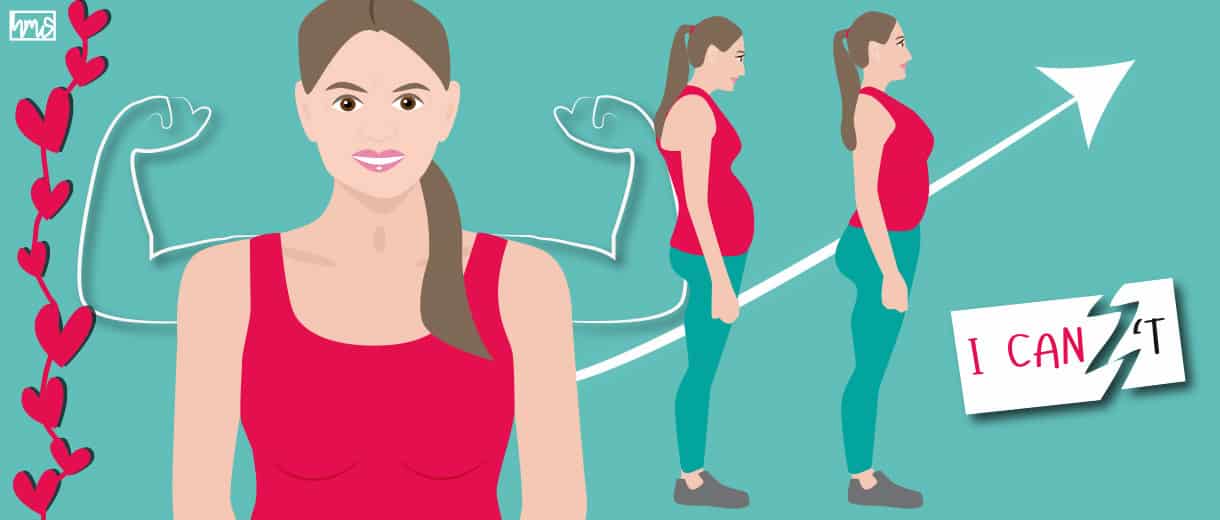The Benefits Of Good Posture In Midlife
“Sit up straight, stop slouching!” This is a phrase that many of us heard from our parents, teachers or coaches, especially when we were children. Even if it seemed like an annoying habit, they meant and did well, as good posture has both physical and psychological benefits for our well-being, at all ages. From improving our back pain to our self-confidence, a better postural alignment impacts more than we think especially when our body inevitably grows older.
Physical benefits of good posture
Good posture brings about several important benefits for the body. It dramatically reduces the risk of lower back pain as slouching puts a lot of stress on the posterior structures of the spine, including the intervertebral discs, facet joints, ligaments, and muscles. It also reduces tension in the shoulder and neck area and therefore lowers the risk of headaches caused by cervical issues. Good alignment also improves your lung capacity, digestion and blood circulation since all the fundamental organs and your blood veins are not cramped and have adequate space to deliver their function. Last but not least, good posture increases your energy levels, because your muscles are more relaxed and don’t have to work so hard (and consume a lot of energy) to operate properly.
Psychological gains of good posture
There are also several positive effects for the mind and soul. Good posture simply makes us more attractive as we look taller and slimmer when we are aligned well. This means that other people’s perception of us is more favourable when we appear more confident and comfortable with ourselves. It has also been proven by a study that good alignment increases our self-esteem and self-confidence: researchers found that people who were sitting up straight were more likely to believe the thoughts they were writing down.
In fact, people turn to postural specialists both for physical and mental issues connected with bad posture. “About 20% of my clients book an appointment with me because they are simply unhappy with the way they look“, says Ameet Bhakta, BSc, DipHE and Postural Alignment Specialist from London and proud ambassador of The Ego Scue Method, a postural therapy program, which involves a series of stretches and gentle exercises called E-cises, designed to treat musculoskeletal pain without drugs, surgery, or manipulation.
Why good posture matters in midlife
Midlife is typically a period when many of us start having back pain that radiates to the whole body and causes us to walk, sit and sleep in positions that are not healthy or beneficial. If the pain is not tackled early on and we continue to move in the wrong ways, our bodies can develop chronic illnesses that are difficult to heal. In middle age, it is particularly important to maintain good posture to combat the loss of bone mass and reduced muscle tissue.
Most of the clients I see are middle-aged men and women in chronic pain. This is because as a society we are becoming more and more sedentary – Ameet Bhakta admits-. Our modern-day lifestyles rarely allow the diversity and frequency of movement that maintains this balance. Even from a young age, we spend too much time sitting at a desk at school, and many of us have desk jobs. All of this combined with injuries and other stressors can lead to misalignments in your posture. Often, the ‘unexplained’ source of many health conditions is that our body is out of alignment. This affects the quality of our lives and our ability to work.
Key to good posture
The key to good posture is in the position of our spine. Our spine has three natural curves — at the neck, mid-back, and low back. Correct posture should maintain these curves, but not increase them. Our head should be above our shoulders, and the top of our shoulder should be over the hips. An easy and simple posture check you can try virtually anywhere is known as the wall test. Stand with your back facing a solid wall, and place your back against the surface of the wall. From here, there are a few ways to assess your posture. First, check to see what parts of your body are touching the wall without any effort on your part. Your feet, hips, shoulder blades, and the back of your head should all be resting against the wall if you have proper posture.
There are several sports and physical exercises that contribute to the correct alignment of our spine and fortification of the core muscles. Swimming is one of the most beneficial sports that we can practise: despite burning calories and shaping muscles, swimming strengthens our core without putting unnecessary strain on our joints. Yoga and Pilates are both activities where our core muscles are fortified and stretched; if practised on a regular basis, these improve our body posture. Total Body Resistance (TRX) is also another way to fortify core muscles — it consists of bodyweight exercises that are combined with the use of rubber bands or ropes as an added resistance.
Daily habits that contribute to good posture
Getting up from a seated position every 30-60 minutes and walking around is a great habit, as well as using our body in a variety of ways so all the muscles of our body stay in good balance. You can also do some posture exercises each day to keep your body in balance. Positions we should avoid instead are hunching our upper back while watching the phone, poking our chins while working on the computer and cradling the phone between our ear and shoulder.
The world’s largest medical library, US Medline Plus also gives the following tips for improving your posture:
- Be mindful of your posture during everyday activities, like watching television, washing dishes, or walking
- Stay active. Any kind of exercise may help improve your posture, but certain types of exercises can be especially helpful. They include yoga, tai chi, and other classes that focus on body awareness. It is also a good idea to do exercises that strengthen your core (muscles around your back, abdomen, and pelvis).
- Maintain a healthy weight. Extra weight can weaken your abdominal muscles, cause problems for your pelvis and spine, and contribute to low back pain. All of these can hurt your posture.
- Wear comfortable, low-heeled shoes. High heels, for example, can throw off your balance and force you to walk differently. This puts more stress on your muscles and harms your posture.
- Make sure work surfaces are at a comfortable height for you, whether you’re sitting in front of a computer, making dinner, or eating a meal.
How do I sit properly?
- Keep your feet on the floor or on a footrest, if they don’t reach the floor.
- Don’t cross your legs. Your ankles should be in front of your knees.
- Keep a small gap between the back of your knees and the front of your seat.
- Your knees should be at or below the level of your hips.
- Adjust the backrest of your chair to support your low- and mid-back or use a back support.
- Relax your shoulders and keep your forearms parallel to the ground.
- Avoid sitting in the same position for long periods of time.
How do I stand properly?
- Bear your weight primarily on the balls of your feet.
- Keep your knees slightly bent.
- Keep your feet about shoulder-width apart.
- Let your arms hang naturally down the sides of the body.
- Stand straight and tall with your shoulders pulled backwards.
- Tuck your stomach in.
- Keep your head level-your earlobes should be in line with your shoulders. Do not push your head forward, backward, or to the side.
- Shift your weight from your toes to your heels, or one foot to the other, if you have to stand for a long time.
What is the proper lying position?
- Find the mattress that is right for you. While a firm mattress is generally recommended, some people find that softer mattresses reduce their back pain. Your comfort is important.
- Sleep with a pillow. Special pillows are available to help with postural problems resulting from a poor sleeping position.
- Avoid sleeping on your stomach.
- Sleeping on your side or back is more often helpful for back pain. If you sleep on your side, place a pillow between your legs. If you sleep on your back, keep a pillow under your knees.
Conclusion
Good posture is about more than standing up straight so you can look your best. It is an important part of your long-term health. Making sure that you hold your body the right way, whether you are moving or still, can prevent pain, injuries, and other health problems.


